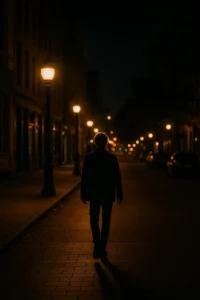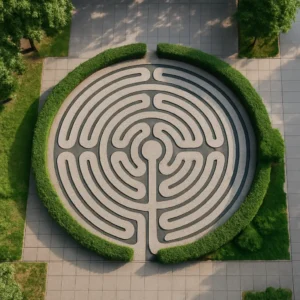Urban myths are the campfire stories of modern cities — tales whispered in school halls, shared online, or told by a friend of a friend. Some are creepy, others hilarious, but all of them stick in our collective memory. Over time, a few of these stories leap beyond neighborhoods and local gossip to become global pop culture icons, shaping films, books, and the way we look at the world.
One of the most famous urban myths is The Vanishing Hitchhiker. The story usually involves a driver who picks up a silent, often cold passenger on a lonely road — only to discover later that the hitchhiker had died years ago. Versions of this tale appear in countries around the world and have inspired countless horror movies and TV episodes, reinforcing our fascination with ghosts that walk among us.
Another enduring legend is Bloody Mary — the ghost who supposedly appears in the mirror if you say her name three times. Originating as a children’s dare game, the myth evolved into a worldwide phenomenon. It’s been featured in horror films, Halloween attractions, and internet challenges, proving how a simple bathroom ritual can become a global scare.
The Killer in the Backseat is a myth that mixes fear with everyday routine. A driver is warned by a stranger that someone is hiding in the backseat of their car. This myth taps into our vulnerability and has appeared in thrillers, crime stories, and even safety campaigns, turning an urban tale into a public reminder to stay alert.
In New York City, the myth of alligators in the sewers has captured imaginations for decades. It began with stories of baby reptiles flushed down toilets that supposedly grew into full-sized monsters in the dark depths below the city. Though wildly exaggerated, the story became part of comic books, cartoons, and even tourism lore.
Slender Man is one of the first urban myths born and raised on the internet. Created on a forum in 2009, this faceless figure in a black suit haunts forests and kidnaps children. Despite being fictional, Slender Man sparked a wave of creepypasta stories, fan art, and even a real-life crime, raising questions about how digital myths can influence the real world.
The Choking Doberman, The Kidney Thief, and The Hook-Handed Man are other examples of urban legends that morphed into pop culture themes. These stories appear in plotlines of major shows like Supernatural, The X-Files, and American Horror Story, where myth and entertainment blend seamlessly.
Urban myths work so well in pop culture because they tap into deep fears and emotions — fear of the unknown, distrust of strangers, or anxiety about modern life. They’re usually short, easy to remember, and open-ended, allowing them to evolve with each retelling. In a way, they’re modern folklore — flexible, adaptable, and reflective of the times.
In the digital age, urban myths spread faster and wider than ever before. YouTube videos, TikTok challenges, and Reddit threads keep these stories alive, while memes and hashtags turn them into viral trends. What used to take decades to spread now happens overnight.
And yet, the core remains the same: we crave mystery. We want to believe — or at least imagine — that there’s more to the world than what we see. Urban myths give us shared experiences, spark conversation, and even offer a sense of nostalgia for the spooky tales we grew up with.
So whether it’s a ghost in the mirror, a silent hitchhiker, or a creepy figure in the woods, urban myths remind us that storytelling is alive and well — and still evolving on the walls, streets, and screens of our cities.







